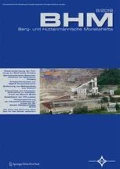Abstract
The paper starts by considering the broad framework of the industry, and in particular whether the current boom in production and the threatened shortages of certain strategic minerals are likely to lead to scarcities. The paper suggests that shortages are unlikely and that minerals will become even more widely available and at lower cost. That said, energy and maintaining the license to operate will drive the introduction of new technologies.
Using copper as an example, we point out the inevitable lower grades that will be processed and for ever lower selling prices in real terms, as has happened for centuries. Technological innovation is the driver of these trends, and the paper highlights several areas where significant changes are poised to occur: in pre-conditioning and in minimizing grinding by removing gangue at coarser sizes earlier in the flowsheet; in recognition that the excessive energy used in comminution may be largely caused by the formation of force chains that bear the load and resist breakage events; and finally, two developments by Jameson (Can Metallurgical Quart 49(4), 324–330, 2010) for more energy efficient fine particle flotation and a significantly new concept for coarse particle flotation to 1400 micron.
Zusammenfassung
Zunächst werden allgemeine Aspekte der mineralverarbeitenden Industrie betrachtet; insbesondere die Frage, ob der derzeitige „Boom“ bei der Produktion und die drohende Knappheit bestimmter strategischer Mineralien eventuell zu Engpässen führen könnten. In der vorliegenden Arbeit wird die These aufgestellt, dass Engpässe unwahrscheinlich sind und dass mineralische Rohstoffe zunehmend zu niedrigeren Kosten verfügbar sein werden. Außerdem werden Energiefragen und die Erhaltung von Betriebsbewilligungen die Einführung neuer Technologien vorantreiben.
Am Beispiel von Kupfer wird auf die unvermeidliche Verarbeitung armer Erze und auf die stetig sinkenden realen Verkaufserlöse verwiesen, was bereits seit Jahrhunderten zu beobachten ist. Technische Innovationen treiben diese Entwicklungen voran. Einige Gebiete, in denen wesentliche Veränderungen zu erwarten sind, werden in der Arbeit vorgestellt:
-
Reduktion des Zerkleinerungsaufwands durch frühere Abtrennung von grober Gangart,
-
Bedeutung des Kraftflusses über Materialbrücken für die Zerkleinerungsenergie,
-
Aktuelle Entwicklungen von Jameson bezüglich der Flotation im Fein- und Grobkornbereich (bis zu 1400 μm).






Similar content being viewed by others
References
Jameson, G. J. (2010): Advances in fine and coarse particle flotation. Can Metallurgical Quart. 49 (4), 324–330.
European Commission (2011): Communication from the Commission to the European Parliament, the Council, the European Economic and Social Committee and the Committee of the Regions: Tackling the challenges in commodity markets and on raw materials. Brussels. 2.2.2011 COM.
House of Commons, Science and Technology Committee (2011): Strategically important metals. Fifth Report of Session 2010–12. Ordered by the House of Commons, 4 May.
AQM Copper Inc. Copper fundamentals. August 2012. Available from http://www.aqmcopper.com/s/CopperFundamentals.asp
Rio Tinto Alcan (2011): Alumina Speeches July 2011, Rio Tinto Alcan, Melbourne and Sydney. Available from: http://www.riotinto.com/documents/RTA_Presentation_-_July_2011.pdf
Schmidt, F. (2012): Club of Rome has a skeptical take on the future, Deutsche Welle. Available from: http://www.dw.de/dw/article/0,,15937174,00.html
Meadows, D. H., Meadows, D. L., Randers, J., and Behrens III, W. W. (1972): Limits to Growth, New York: New American Library.
Batterham, R. J. (2012): Opportunities for improvement in alumina production: balancing incremental and breakthrough innovation. International Mineral Processing Congress, September, 2012, New Delhi. In press
United States Geological Survey (USGS) (2012): Copper statistics. Available from: http://minerals.usgs.gov/ds/2005/140/ds140-coppe.pdf
PricewaterhouseCoopers (2012): On the road again? Global mining: 2011 Deals Review & 2012 Outlook, PricewaterhouseCoopers. Available from: http://www.pwc.com/en_CA/ca/mining/publications/pwc-m-a-industry-briefing-2012-03-en.pdf
PricewaterhouseCoopers (2012): Mine. The growing disconnect. Review of global trends in the mining industry. Available from: http://download.pwc.com/gx/mining/pwc-mine-2012.pdf
Ernst & Young, 2010. The Ernst & Young Business Risk Report 2010, Ernst & Young. Available from: http://www.ey.com/GL/en/Services/Advisory/Business-Risk-Report-2010---Business-risks-across-sectors
Hollitt, M. J. (2012): Success factors for the introduction of new technology in mineral processing. International Mineral processing Congress, September, 2012, New Delhi. In press
Wotruba, H. (2012): Sensor based separation technologies—status and outlook, EUMICON 2012, Leoben, Austria, 20 September.
Pokrajcic, Z. (2010): A Methodology for the Design of Energy Efficient Comminution Circuits, PhD Thesis, Sustainable Minerals Institute, The University of Queensland.
Pokrajcic, Z., O’Halloran, R., and Jones, C. (2010): Evaluation of communition circuit design for sustainability using economicsTM. In: Proceedings IMPC, Brisbane, 2010.
Buchholtz, V., Freund, J. A., and Pöschel, T. (2000): Molecular dynamics of comminution in ball mills. Eur. Phys. J. B 16, 169–182.
Pöschel, T. (2012): Available from: http://www.mss.cbi.uni-erlangen.de/index.php?p1=research&p2=articles&r=granular/RotatingCylinder/Comminution
Tordesillas, A., and Muthuswamy, M. D. (2008): A thermomicromechanical approach to multiscale continuum modeling of dense granular materials, Acta Geotechnica, 3, 225–240.
Jameson, G. J. (2012): Private communication.
Batterham, R. J. (2005): Flotation in the mineral industry—some observations, Centenary of Flotation Conference, Brisbane, 6 June 2005.
Author information
Authors and Affiliations
Corresponding author
Rights and permissions
About this article
Cite this article
Batterham, R. Major Trends in the Mineral Processing Industry. Berg Huettenmaenn Monatsh 158, 42–46 (2013). https://doi.org/10.1007/s00501-013-0109-0
Received:
Accepted:
Published:
Issue Date:
DOI: https://doi.org/10.1007/s00501-013-0109-0




